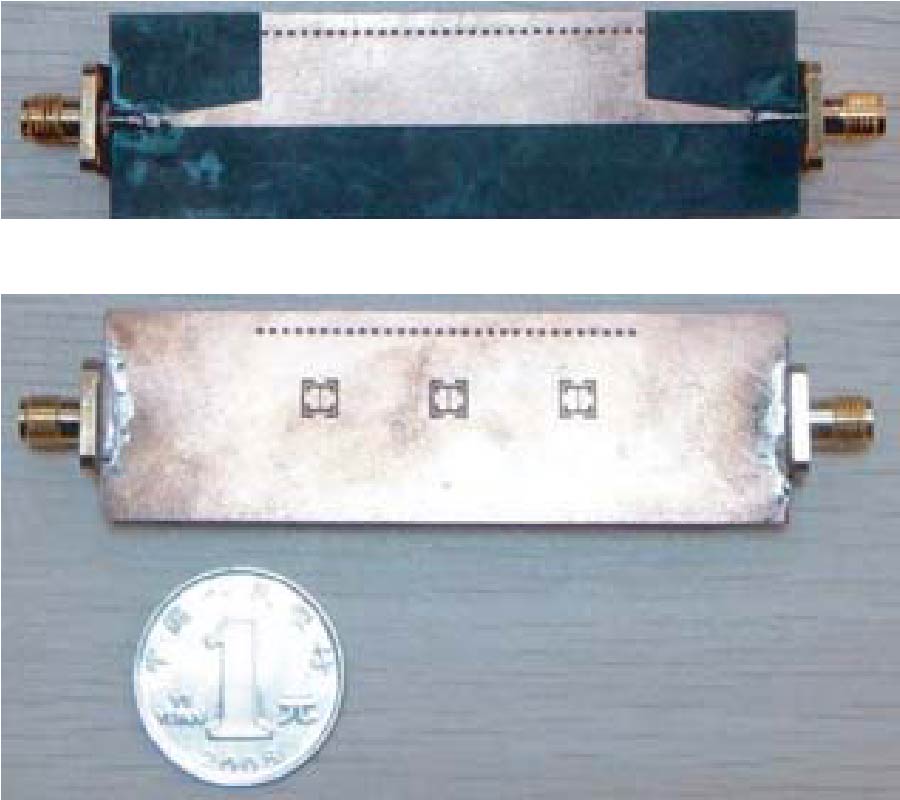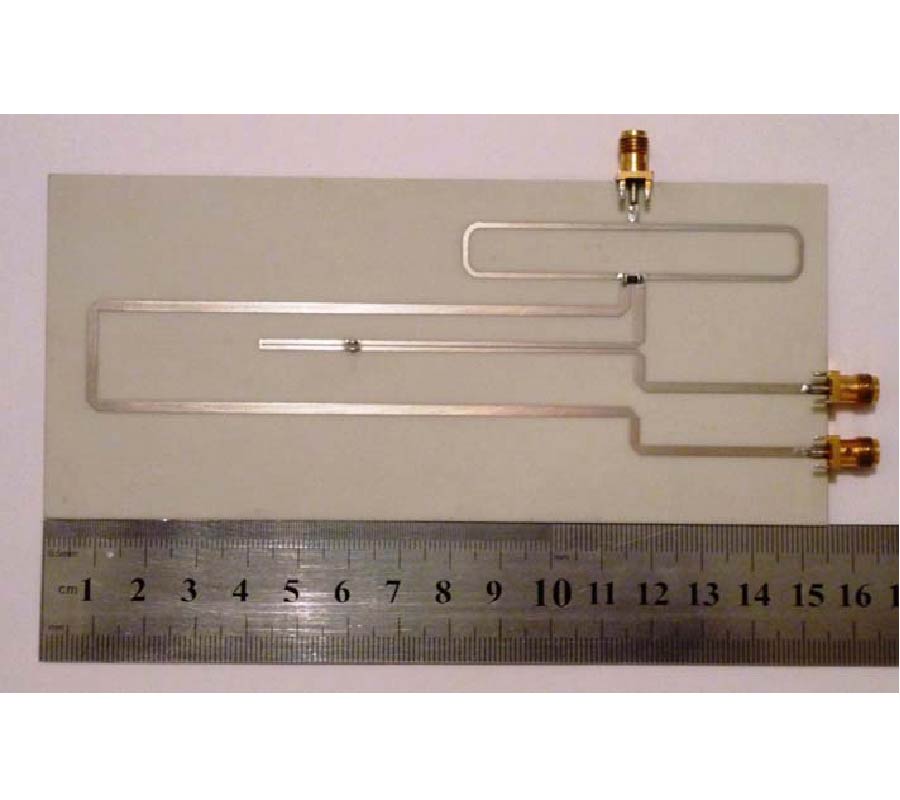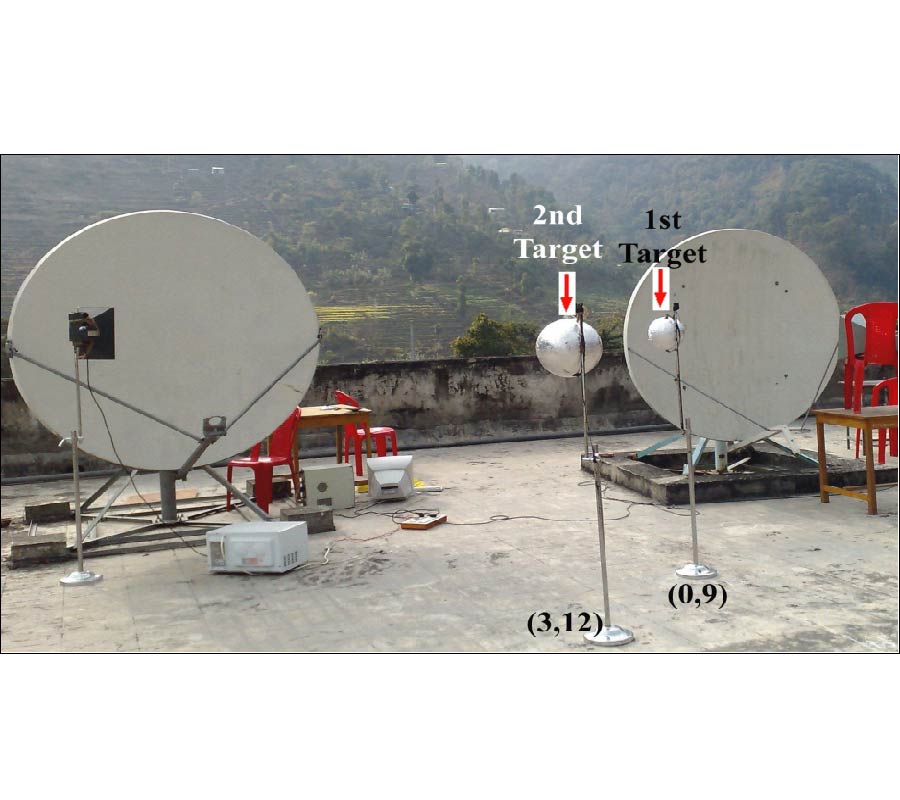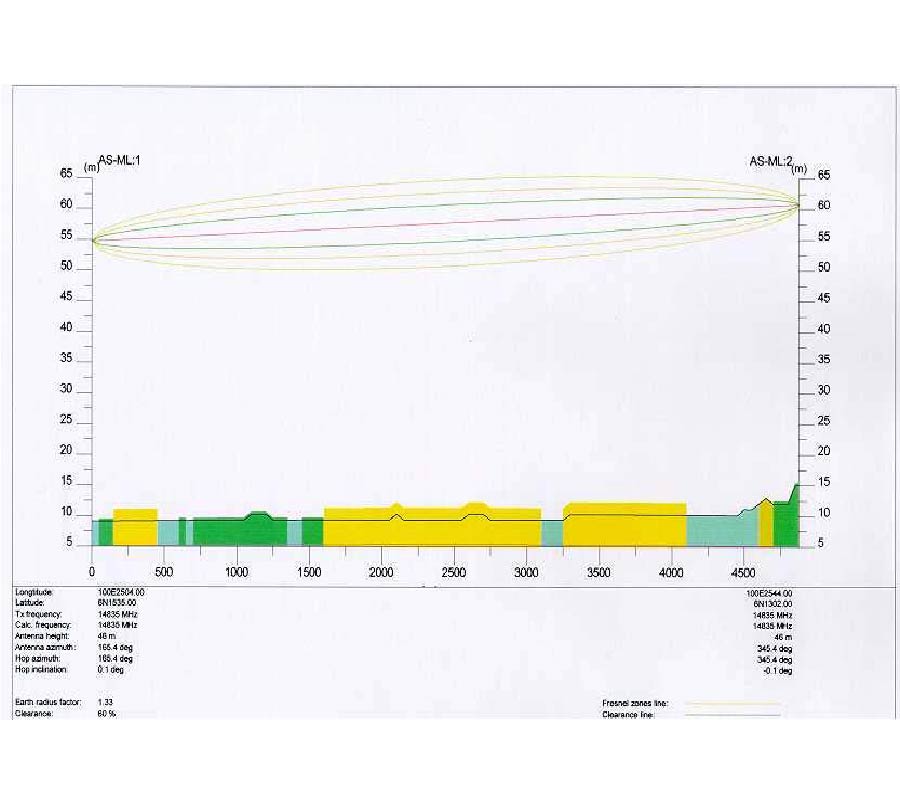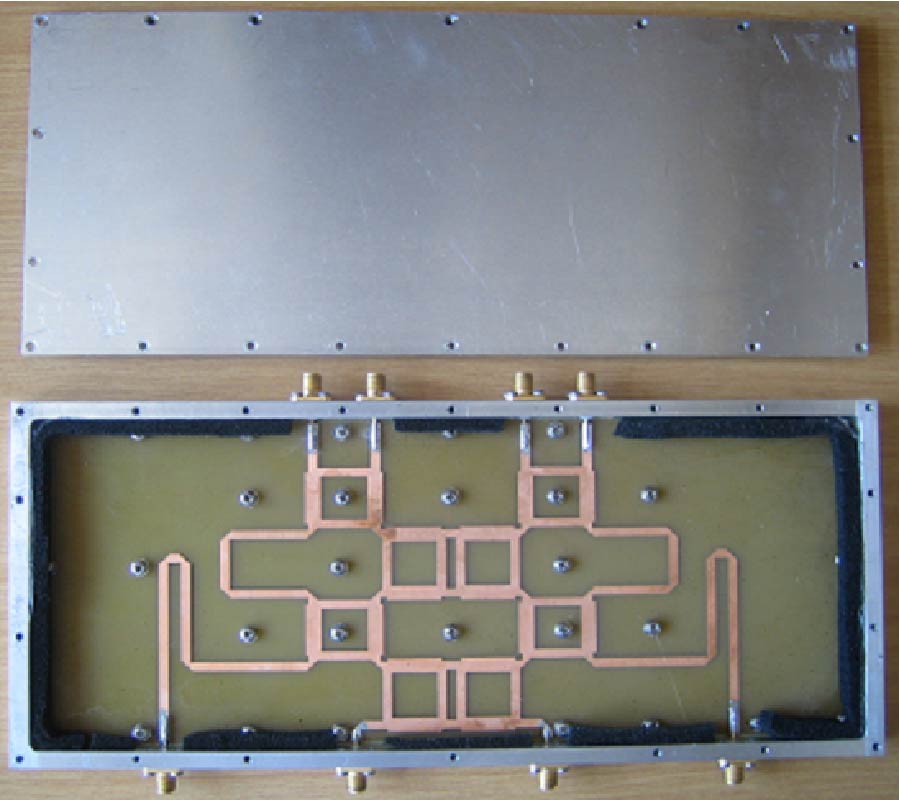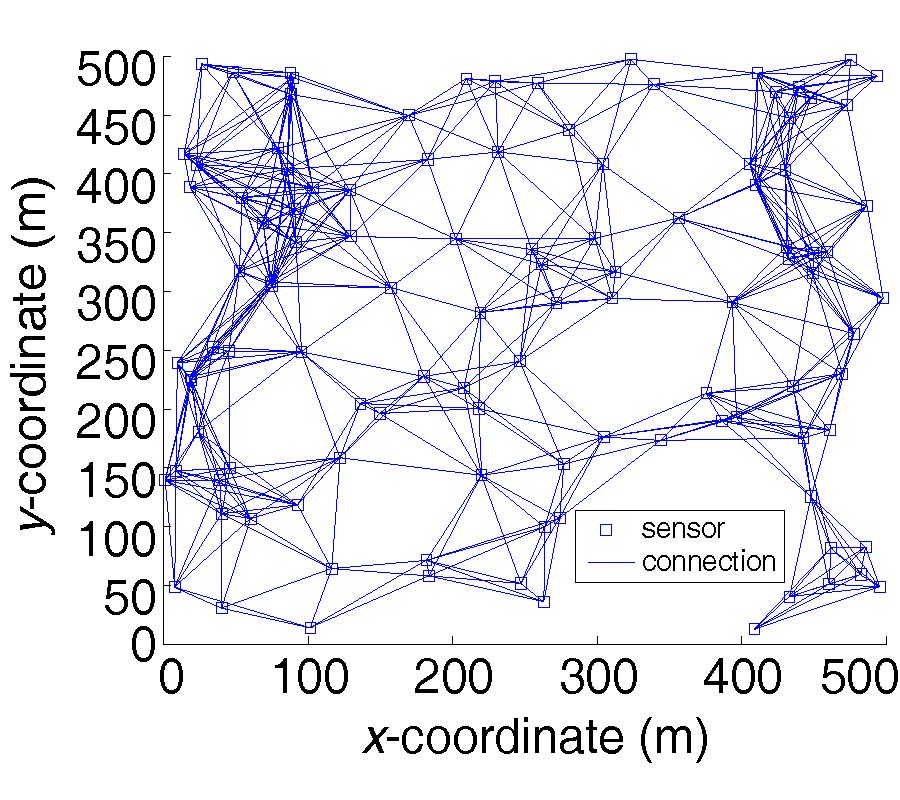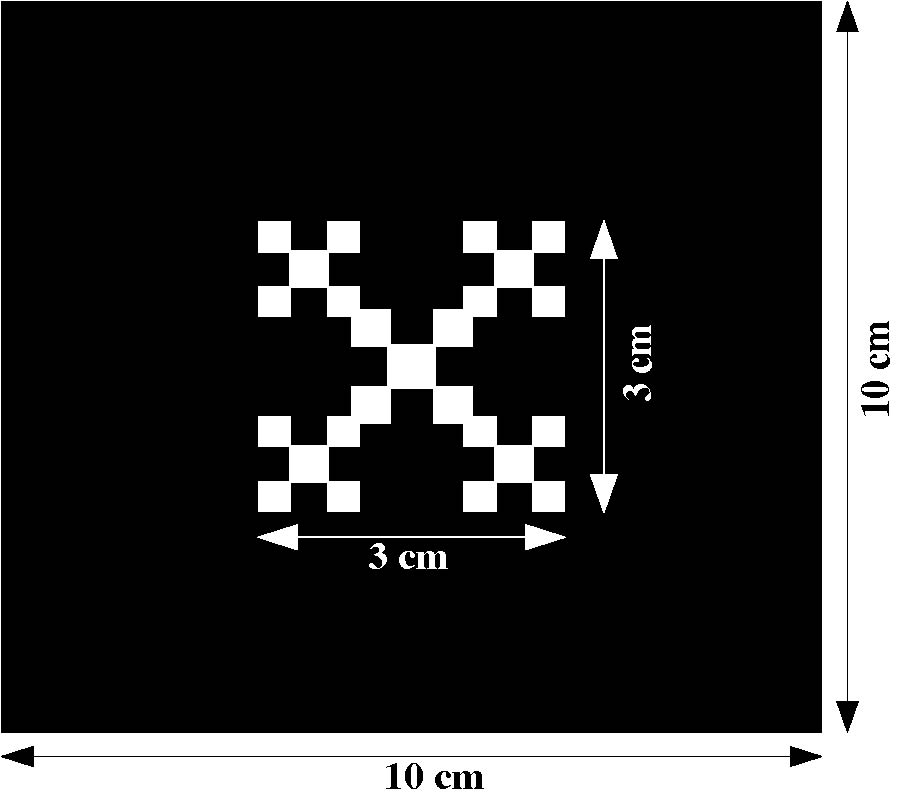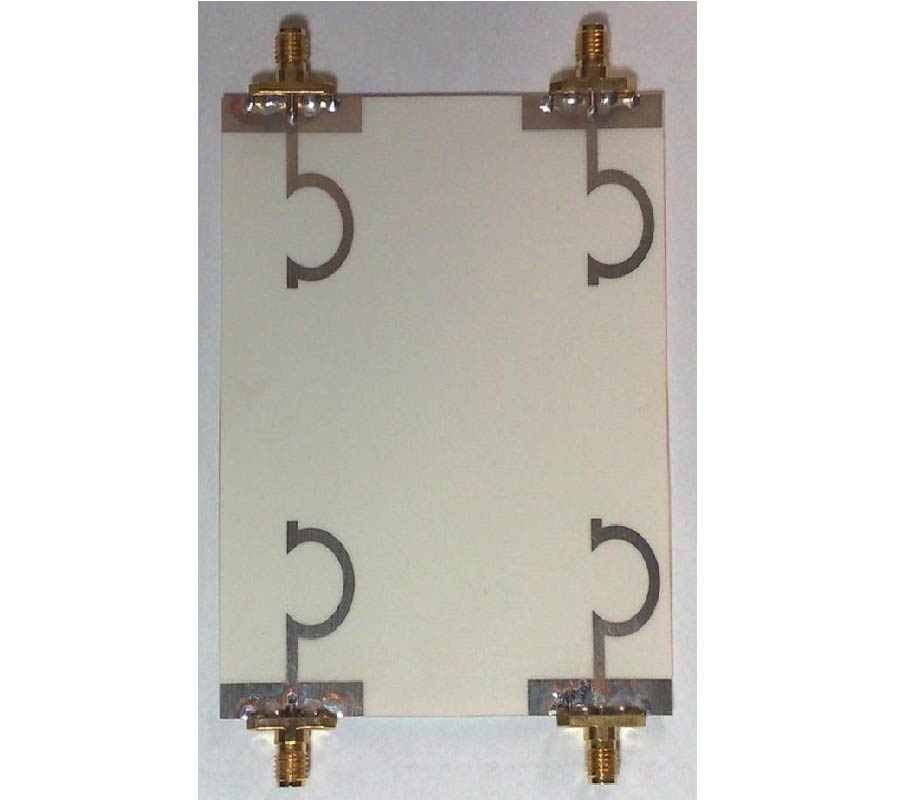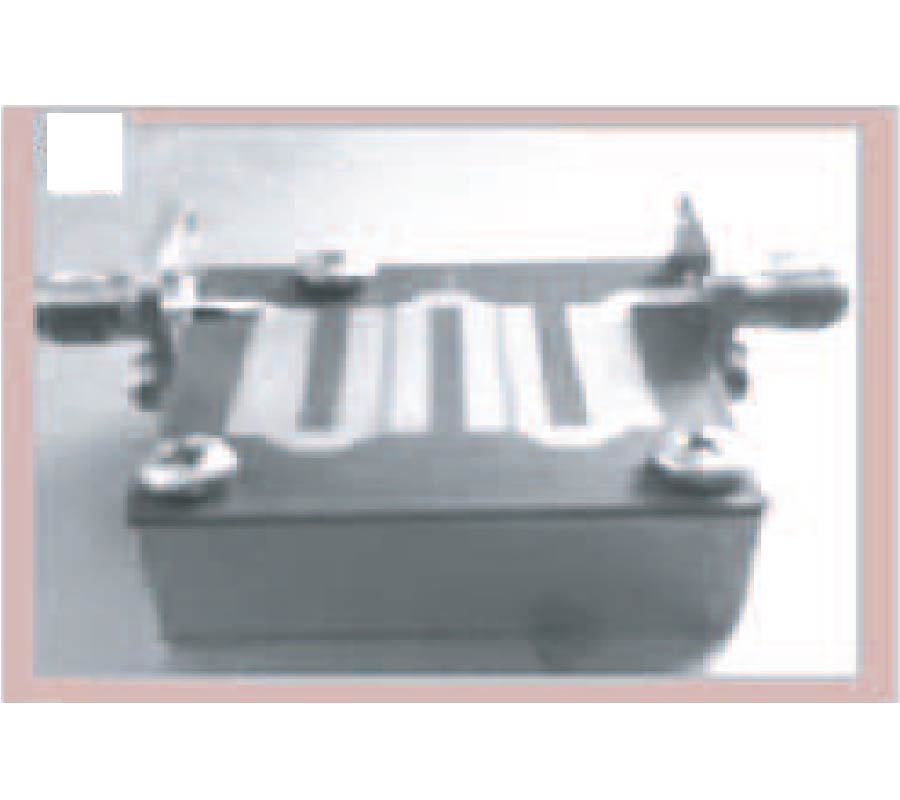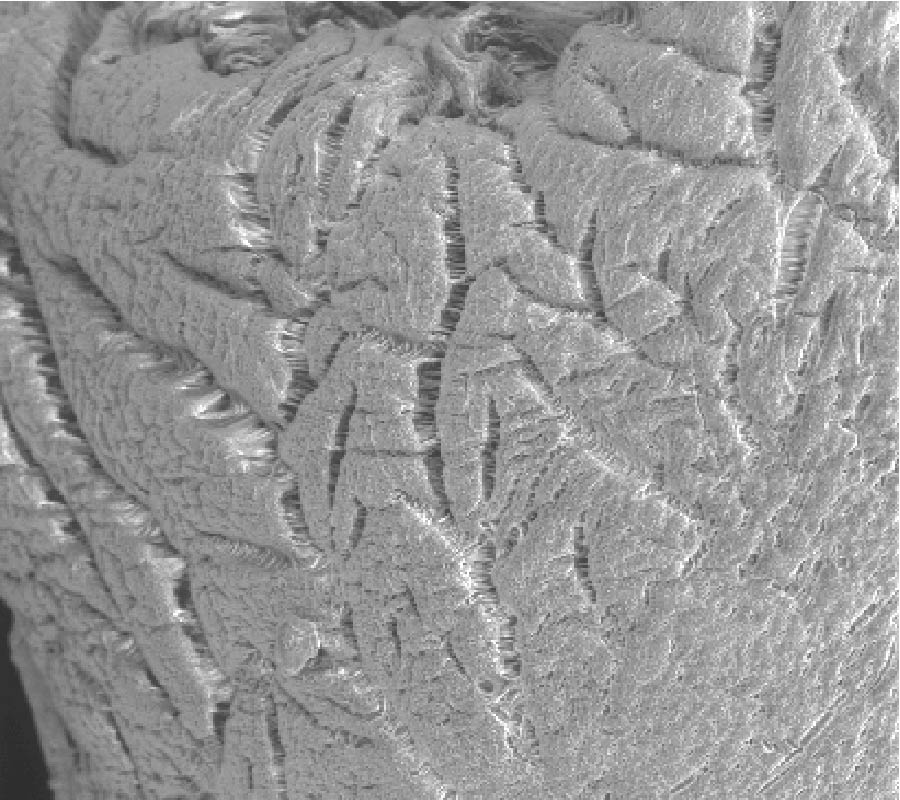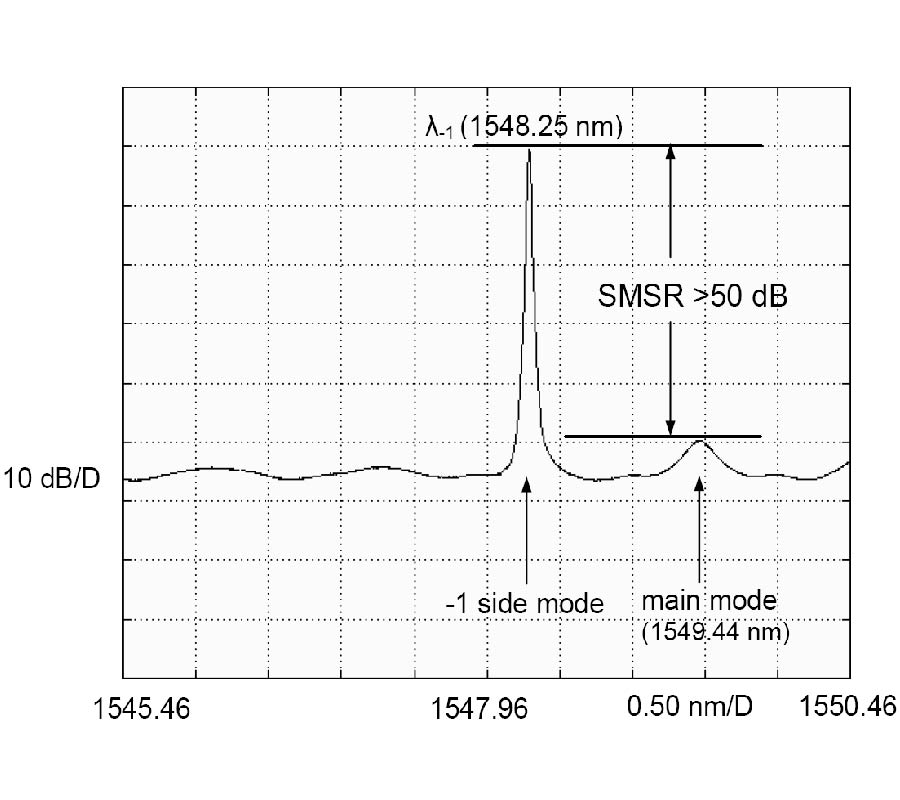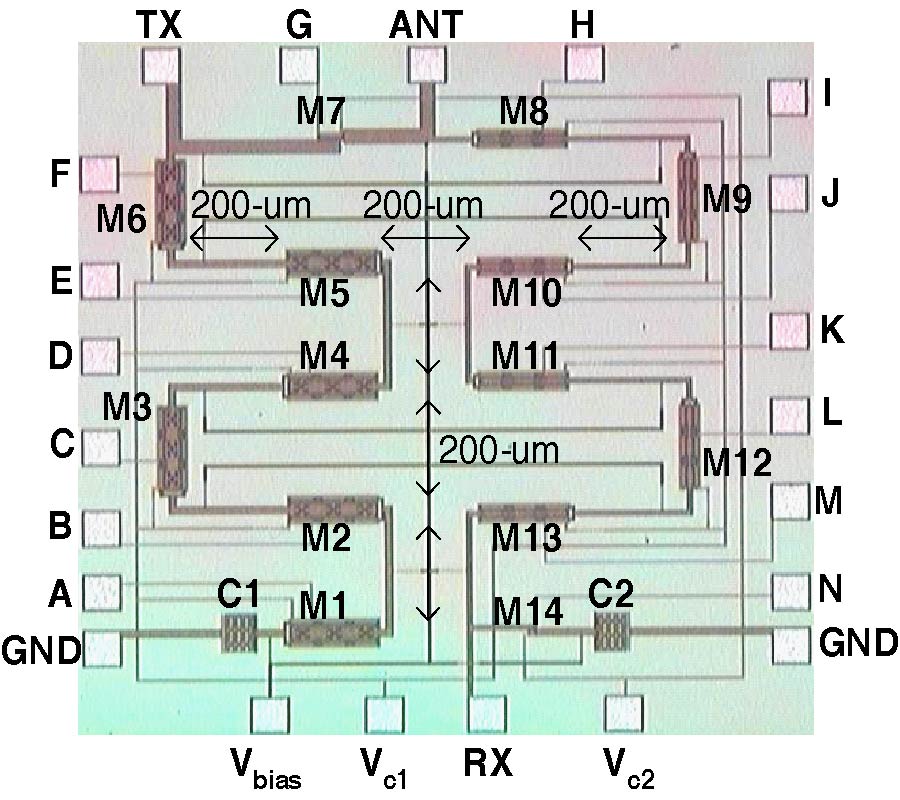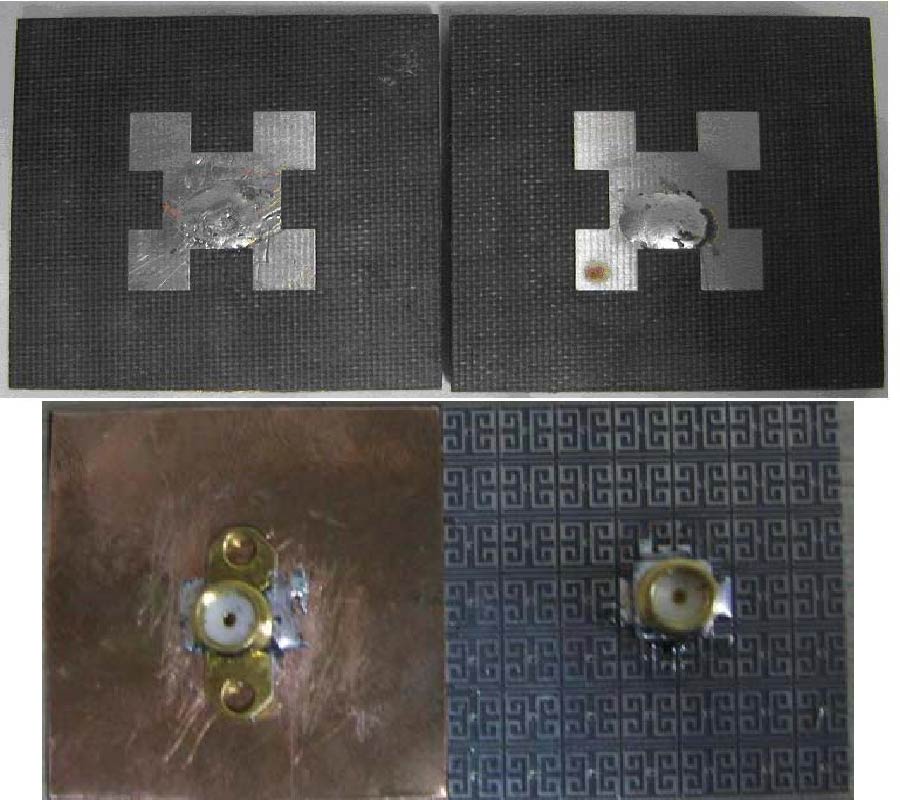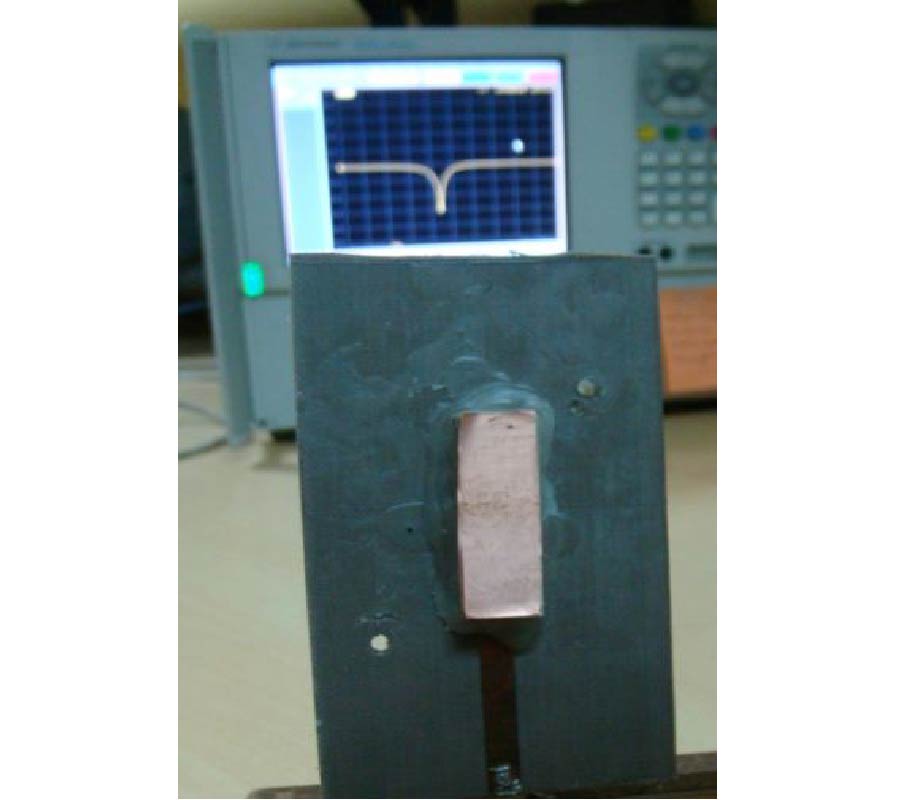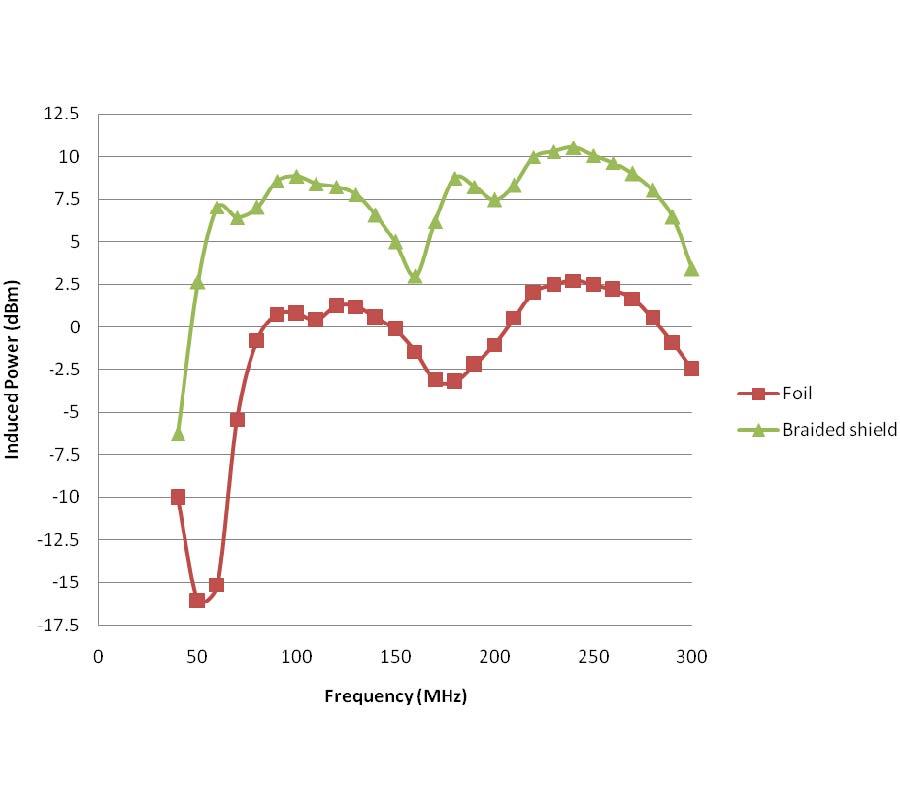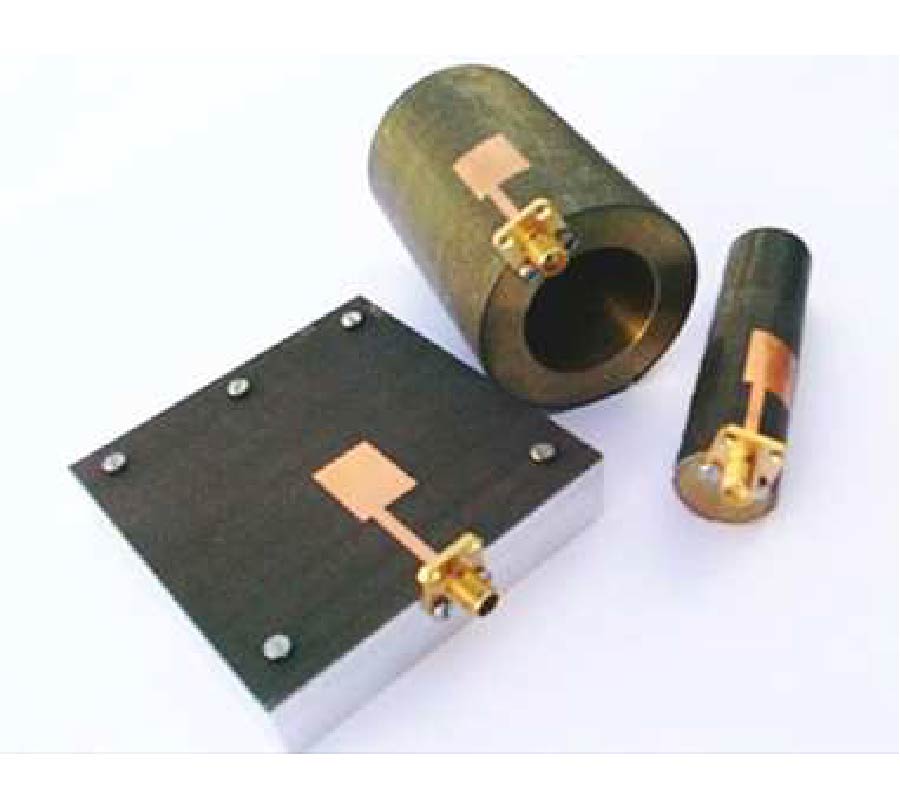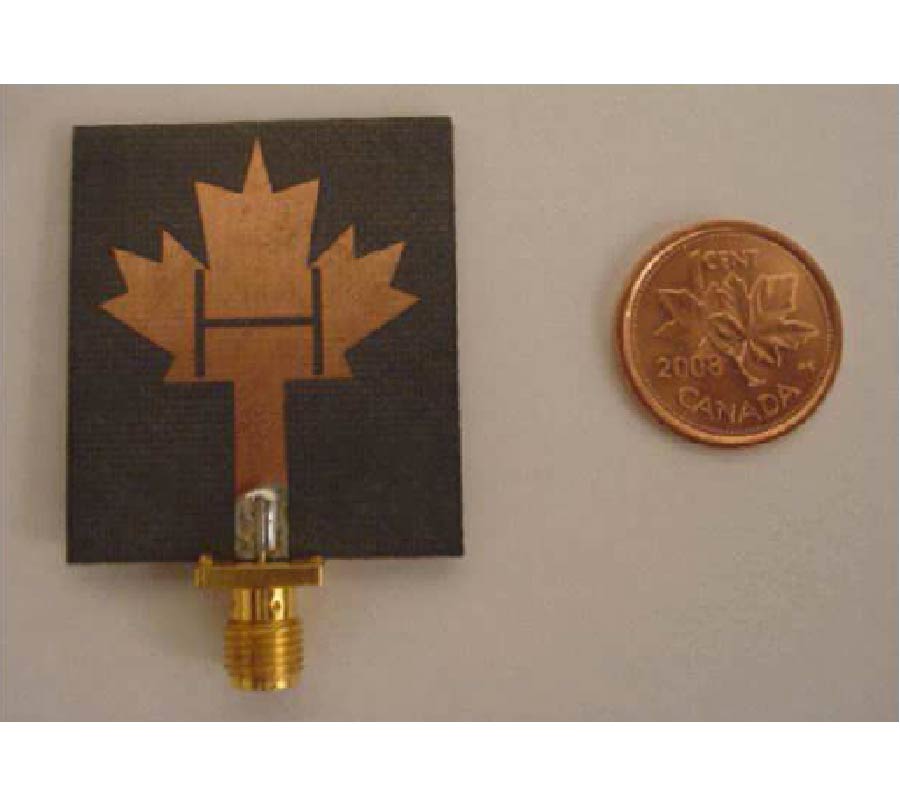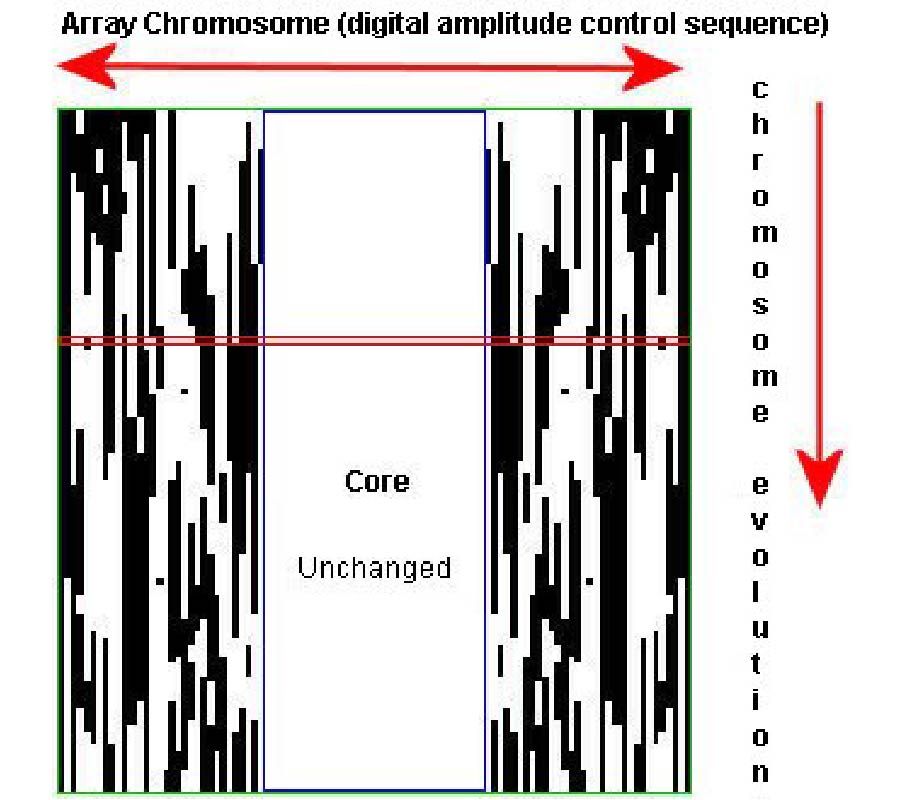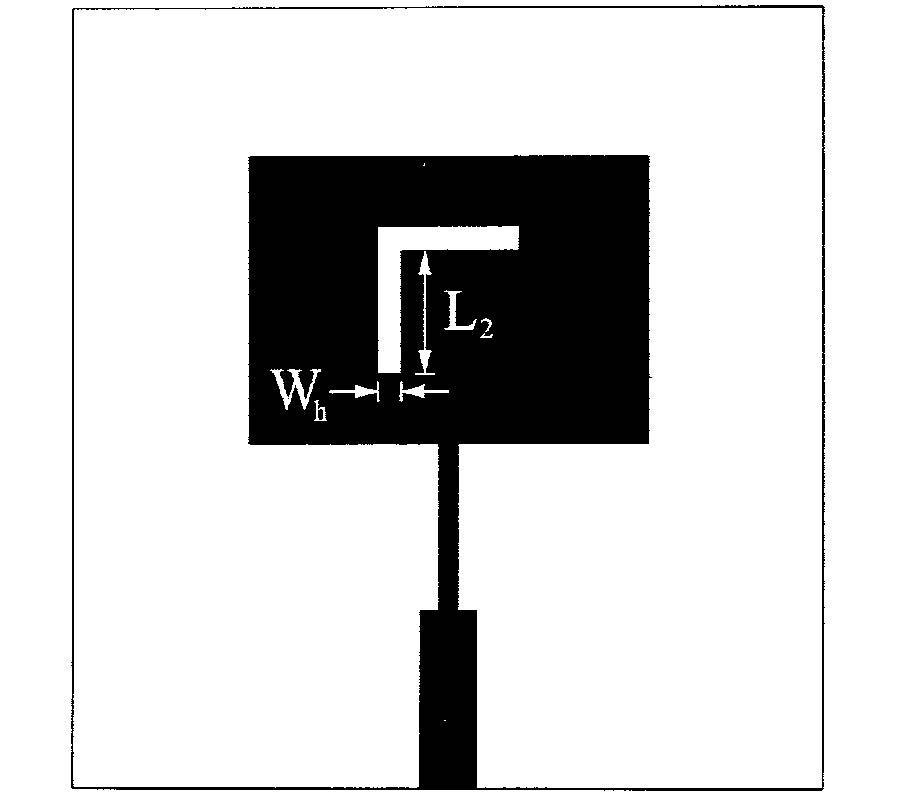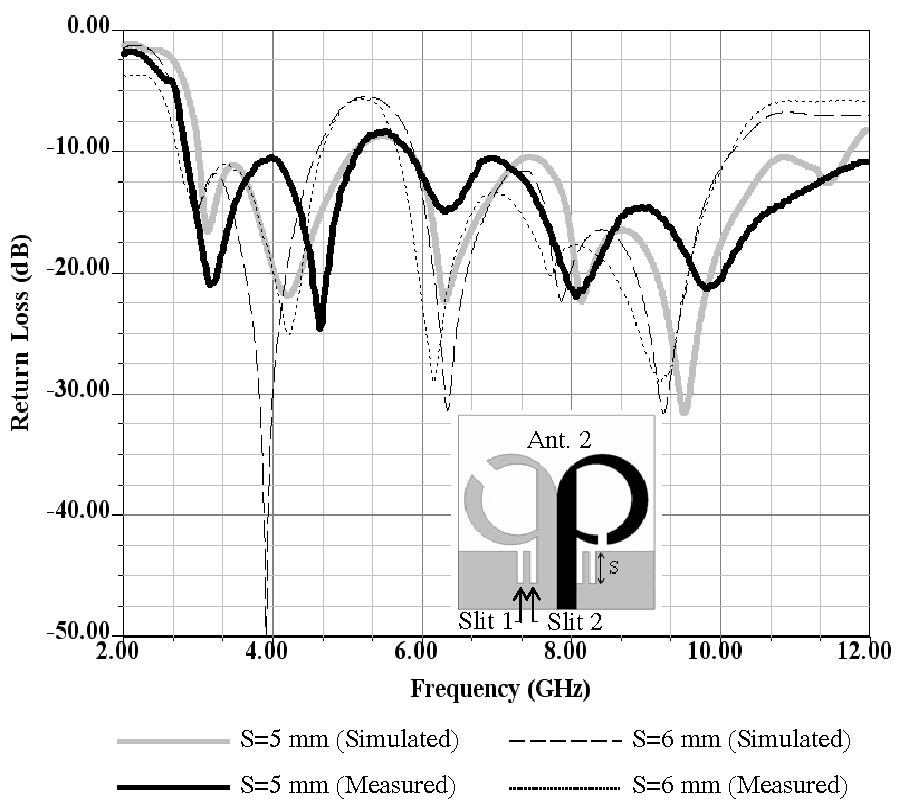A Broadband Quadrature Hybrid Using Improved Wideband Schiffman Phase Shifter
Eslam Jafari,
Farrokh Hojjat-Kashani and
Reza Rezaiesarlak
In this paper, a broadband quadrature hybrid is presented. The hybrid comprises a Wilkinson divider, followed by an improved Schiffman phase shifter. An improved wideband Schiffman phase shifter on a single layer printed circuit board is accompanied by a lumped capacitor between two coupled lines. Lumped capacitor is in parallel with the odd-mode capacitance of the two coupled lines, hence, the odd-mode capacitance is increased and consequently the odd-mode impedance is decreased. Therefore, by this method we can control the ratio of the even mode impedance to the odd mode impedance which is critical in Schiffman phase shifter design. Compared with the cascading Microstrip multi-section coupled lines, our proposed single layer phase shifter is smaller in size. Also, the proposed phase shifter has the greater bandwidth compared to the patterned ground plane Schiffman phase shifter and its realization is simpler because of its single layer structure. As an example, a Schiffman phase shifter at frequency f0 =650 MHz is designed and simulated. With the proposed phase shifter a 90°hybrid is designed, simulated, fabricated and measured. Exprimental results show that the amplitude and phase imbalance between two paths at worth case are within 0.75 dB and 5°, respectively, over the frequency band from 362 MHz to 891 MHz, or around 84% bandwidth. The measured return loss is better than -10.8 dB over the operating frequency band.
